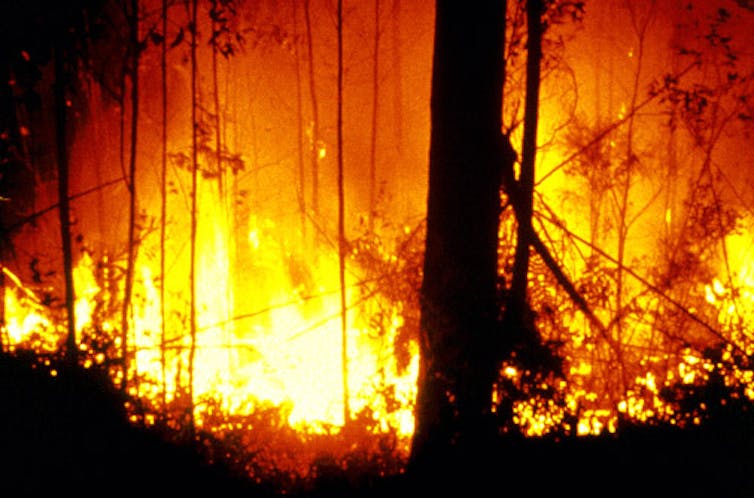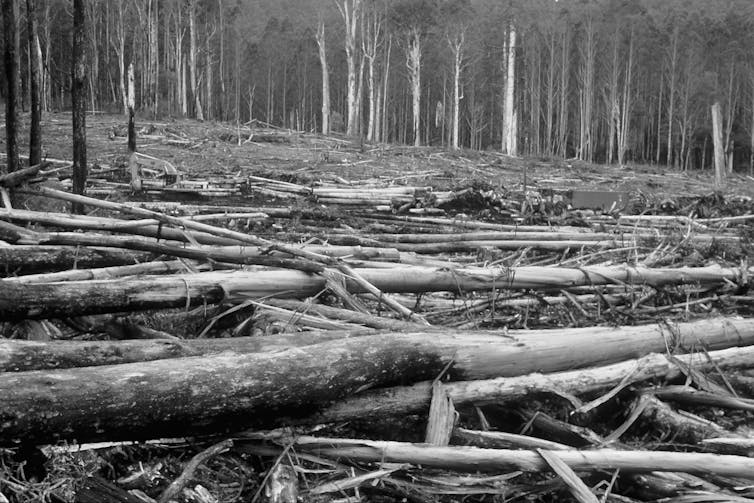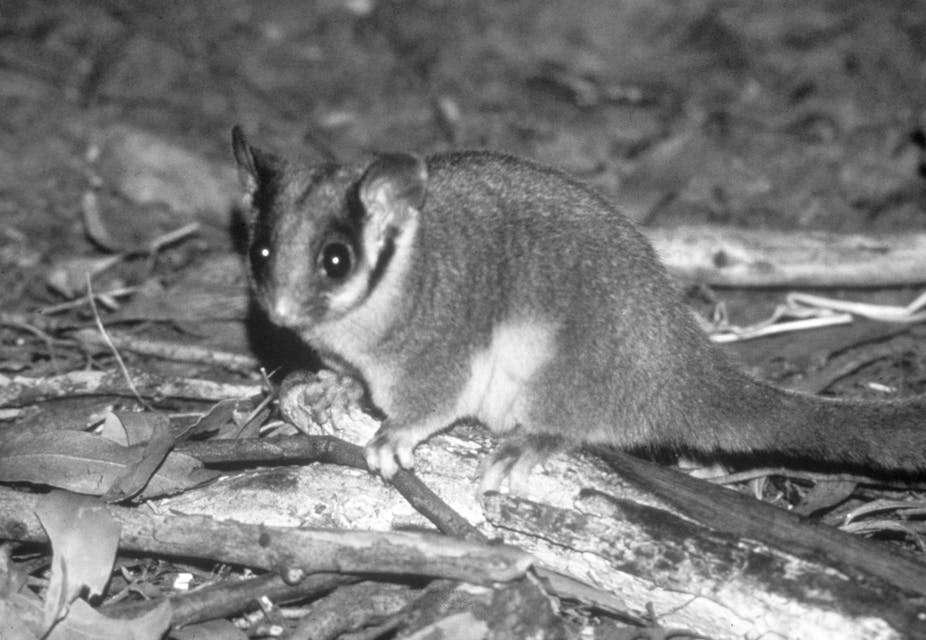The Leadbeater’s Possum, Victoria’s faunal emblem, has been formally recognised as critically endangered. In a media release late on Wednesday, Environment Minister Greg Hunt stated there was an “unequivocal need” to move the species from endangered to the critical listing.
The Minister’s announcement was based on detailed recommendations from a panel of nationally recognised biodiversity experts who comprise the Threatened Species Scientific Committee (that did not include myself) each of whom carefully appraised the large accumulated body of science on Leadbeater’s Possum.
Indeed, Leadbeater’s Possum is among the world’s most intensively studied species – and the factors threatening the species have been well studied over many decades.
My own work on Leadbeater’s Possum in Victoria’s Mountain Ash and Alpine Ash forests dates back more than 30 years to July 1983.
The Mountain Ash forests of the Central Highlands of Victoria also have been formally assessed as being critically endangered . Therefore, Victoria has the unfortunate distinction of having a critically endangered ecosystem supporting a critically endangered species.
Hollow words?
The change of status for Leadbeater’s Possum to critically endangered acknowledges the very high risk of extinction of the species in the wild in the next 20-30 years unless major changes in forest management occur – and quickly.
Detailed scientific assessments of this risk of extinction are based on major changes in the species’ habitat and, in particular, the catastrophic losses in large old hollow-bearing trees – without which Leadbeater’s Possum cannot survive.
But does an uplisting of a species amount to much? It should – but does not always. The Christmas Island Pipestrelle Bat was uplisted to critically endangered, but sadly went extinct soon after. The Christmas Island Pipestrelle was monitored to extinction. Populations of Leadbeater’s Possum must not be allowed to suffer the same fate.
What must change?
What needs to change for Leadbeater’s Possum to persist? The answer is that the processes that threaten the persistence of the species must be removed. This is basic conservation science.
In the case of Leadbeater’s Possum, the key process threatening the species is industrial clearfelling.
The species has previously survived for 10-20 million years in the face of repeated wildfires and changes in climate. But over the past 50 years, the addition of industrial clearfelling to the environments in which it lives threaten the species’ persistence.
Industrial clearfelling has radically changed forest landscapes. It has led to logged areas being unsuitable habitat for Leadbeater’s Possum for more than 150 years, contributed significantly to a reduction in the area of old growth forests to just 1.16% of what was formerly 30-60% of the Mountain Ash estate, rapidly accelerated the decline in populations of large old trees, and increased the probability of fires being high-severity crown-scorching conflagrations.

Past failures must be rectified
Previous Victorian Governments have failed to tackle the myriad of environmental problems arising from industrial clearfelling and have therefore failed to properly address the extinction crisis facing Leadbeater’s Possum.
In fact some previous conservation efforts have had perverse effects. For example, the Leadbeater’s Possum Advisory Group’s Report (Government of Victoria 2014) was scientifically flawed and resulted in a revised “Action Statement” predicated on allowing VicForests to continue logging habitat and thereby further threaten the possum!
The media release from Minister Hunt states that conservation efforts will be directed towards restoring habitat for the lowland population of Leadbeater’s Possum. The species occurs as genetically distinct populations and the one in lowland swamp forests at Yellingbo is thought to number in the tens of individuals. The stronghold for the possum is the Mountain Ash and Alpine Ash forests of the Central Highlands where it is critical that most conservation effort is focused.
In fact, the Threatened Species Scientific Committee which assessed the status of information on Leadbeater’s Possum for Minister Greg Hunt recommended that:
the most effective way to prevent further decline and rebuild the population of Leadbeater’s possum is to cease timber harvesting within the montane ash forests of the Central Highlands of Victoria.
This is entirely consistent with the detailed empirical work by scientists from the Victorian Government which showed that reservation of almost all of the montane ash forest estate was needed to prevent the extinction of Leadbeater’s Possum.
The critically endangered status of both Leadbeater’s Possum and the Mountain Ash forests in which it lives means that the Regional Forest Agreement which underpins the ongoing clearfelling of Victorian Central Highlands forests is now totally untenable.
Indeed, persisting with this flawed Regional Forest Agreement would “lock-in” the extinction Leadbeater’s Possum. This is because the RFA takes legal precedence over State and federal endangered species legislation (The Flora and Fauna Guarantee Act 1988 and the EPBC Act 1999).

Ending the extinctions
Australia leads to world in mammal extinctions. At least 28 species have been lost since European Settlement – a staggering figure of almost 10% of the nation’s mammal fauna.
In comparison, mainland North America has lost just one species during the equivalent period of around 230 years.
Minister Greg Hunt has clearly indicated he wants no species’ extinctions on his watch. He has instigated research initiatives like the newly formed Threatened Species Research Hub and policy initiatives such as the establishment of a Threatened Species Commissioner in an effort to tackle Australia’s extinction problems.
Removal of industrial clearfelling from Victoria’s wet ash forests is the only way to conserve Leadbeater’s Possum. The Victorian Government has no alternative but to do this and prevent Leadbeater’s Possum being added to Australia’s already shockingly long list of mammal extinctions.

